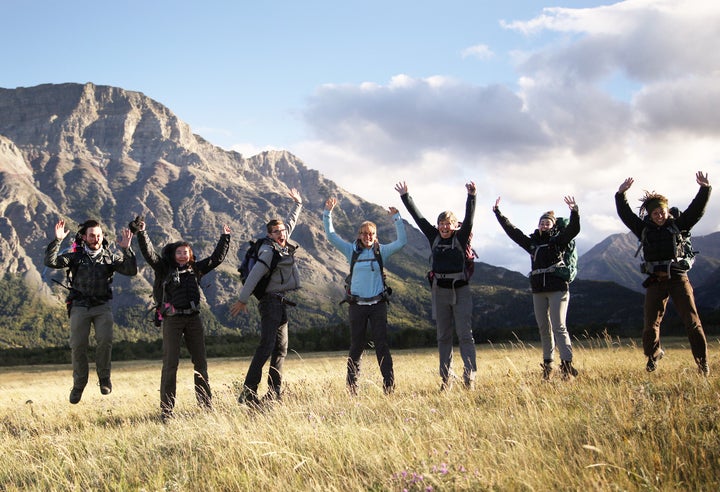On November 10, 2016, as Chief Scientist at Earthwatch Institute, I hosted an informal brownbag lunch to discuss the impacts of the presidential election on science and conservation. Unsurprisingly, a crowd of mostly millennials packed our Boston office conference room.
Defined as individuals who reached adulthood around the turn of the 21st century, the term millennial is often seen as pejorative. However, I see it as positive, because it refers to the current millennium, all its promises and problems, and the brave, pragmatic generation tasked with addressing the ecological mess earlier generations created and the new presidential administration threatens to worsen.
Since our post-election lunch, we’ve kept the conversation flowing in our office, meeting periodically to exchange ideas about what we can do to continue to support science and conservation. We all agree that to begin with, it’s important to not despair. Below are some of our insights.
Stephen Hart points out that as the most educated generation in history, millennials “should feel confident that we’ll be able to succeed where our predecessors have failed. Our success will depend on our willingness to stay engaged in the political process and vote for sustainable solutions.”
Many young people in our office stress that staying informed and involved is crucial. For Dustin Colson, this means organizing demonstrations and writing to elected officials to protest government or corporate actions violating our human right to a safe, healthy, ecologically-balanced environment. “Millennials have so many outlets and options for supporting science,” says Zachary Zimmerman, “that there’s no excuse to not be engaged in at least one way. We can donate instantly or go on monthly contribution plans, create art, share relevant science and debunk falsities on social media, host awareness events, and generally uphold a presence in our respective communities that climate science is real and worth understanding.” Dianna Bell says, “Millennials are great at organizing and have shown, especially during the primaries, that we care deeply and passionately. Continuing to organize both on and offline will be a great tool to support science and conservation during an upcoming era of uncertainty.”
According to Diana Eddowes, one of the most fundamental ways to support science and conservation is to be smart consumers. She says, “Younger generations often drive markets and demands for products. If we demand our energy to be clean, our products to be made from recycled material and in general consume less, we could shift markets (and policies) considerably.”
A good way to get involved is by volunteering at Earthwatch, suggests Keegan Dougherty. Earthwatch engages people worldwide in scientific field research and education to promote the understanding and action necessary for a sustainable environment. By supporting research and enabling people to participate in conservation science, we’re directly addressing global change and helping people make a difference as individuals.

Millennials, Earthwatch Participants, and the Author on the Earthwatch Project Restoring Fire and Wolves to the Canadian Rockies
When it comes to challenges, millennials in our office identify one of the biggest as society’s perception of their generation. Jasmin Rostamnezhad says, “In this time of thriving social media and narcissism, older generations often don’t take us seriously. No matter what knowledge we carry and opinions we share, we’re often discredited.” As Dianna Bell explains, “Millennials are often characterized by qualities that, while true, don't wholly define us as a generation. Because we’re saddled with such huge debt, we don't buy homes and are more transient. But all these qualities are also strengths. We’re misunderstood as a generation. We aren't lazy, we aren't afraid to work hard, and we aren't afraid to speak up. Millennials have inherited a society that’s stacked the cards against us, and a major challenge is addressing this inequality.”
Zachary Zimmerman offers a more positive take on the term millennial. “At a certain point, terms develop currency based on how regularly they’re used, and individuals don’t have much control over their popularity. Our generation should be focused more on how we can own the term and capitalize on it as a uniting quality, and less on how outsiders or dissenters use it to pigeonhole us based on our worst qualities.”
As a generation, millennials see finances as a top threat. While they desire to work for causes they’re passionate about, they’re challenged by the cost of living and the enormity of major issues. “We’re tasked with enacting greater change than our parents with fewer funds and less economic stability,” says Dustin Colson. Anna Woodruff’s biggest challenge lies in balancing making a personally meaningful difference in the world, securing a financially sustainable future, and staying optimistic while doing so. She explains, “As a cohort, we live in more of a global society than generations before us, and feel the weight of issues on that scale.”
Emma Taliaferro struggles with her passion for wildlife conservation and a serious lack of funding. She says, “I want to support science and conservation by donating half my paycheck to save endangered animals or by taking a trip that directly contributes to conservation! But realistically, I have to pay rent, and I can’t take that much time off.” Diana Eddowes who is expecting a child and paying graduate loans believes that becoming economically stable will help her spend more time doing the things she loves and helping people and causes.
While all the young people in our office expressed frustration, they also expressed great hope. Dustin Colson says, “There are moments when I’m working alongside a passionate environmental activist, a dedicated scientist, or an inspirational environmental educator and their excitement and hope become infectious. When I bear witness to these people’s passions I gain a personal stake in their dream for a better and more sustainable world.”
Some find hope in corporations. According to Keegan Dougherty, “Knowing that many companies are moving forward with sustainability initiatives, regardless of what the administration believes, makes me believe that we have a shot at addressing climate change in the long run.”
Many find hope in their peers and by taking action. “On days when I feel like hope might be lost, I come in to work and remember all the people who are passionate about the same things as I. We’re not alone and we’ll continue this movement together,” says Jasmin Rostamnezhad. Anna Woodruff says, “The rise in activism and discussion of inclusion among this generation give me hope that people aren’t going to just stand by and let the worst-case situation occur. With collaboration, we have a chance to create change even in dark times.” Zachary Zimmerman cites “my generation’s inexhaustible resourcefulness ” as a key source of optimism.
Millennial resourcefulness involves science and technology. Stephen Hart explains, “As scientific evidence becomes more impossible to ignore, I know people will fight even harder for a sustainable future.” Elise Begin agrees. “Now more than ever, it’s critical for millennials to support science and conservation.” She says, “We need to ensure that millennials continue to be involved in science by becoming scientists, contributing as a citizen scientists, reading scientific articles, or attending lectures.”
As for me, my greatest hope lies in the millennial generation and what they will do to advance science and conservation. They have the tools, skills, vision, and commitment to create a more sustainable world.
* * *
Learn more about carnivore conservation by reading The Carnivore Way: Coexisting with and Conserving North America’s Predators, and The Wolf’s Tooth: Keystone Predators, Trophic Cascades, and Biodiversity by Dr. Cristina Eisenberg. Learn more about large carnivore ecology by joining Cristina afield on her Earthwatch research expedition, Restoring Fire, Wolves, and Bison to the Canadian Rockies.
